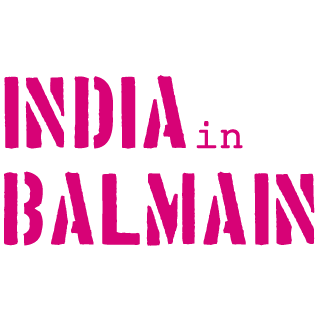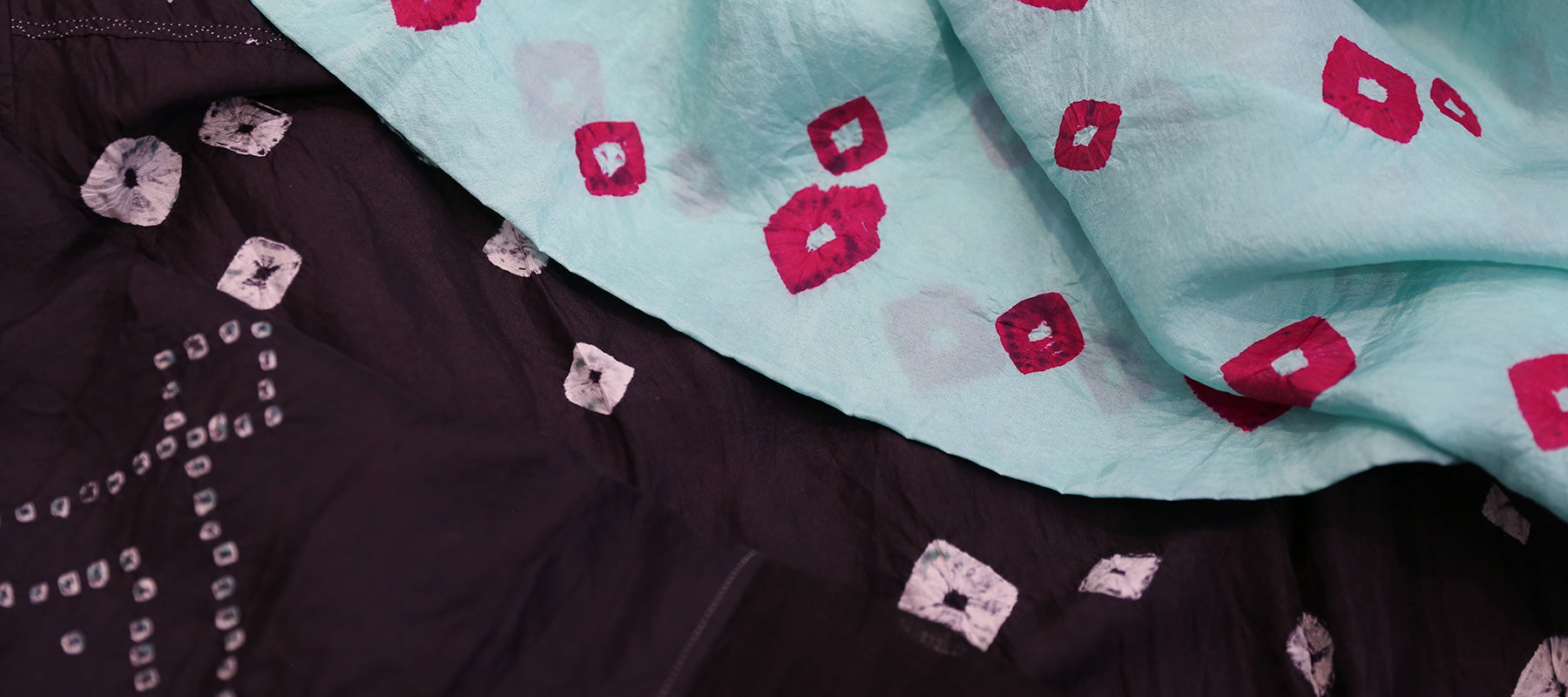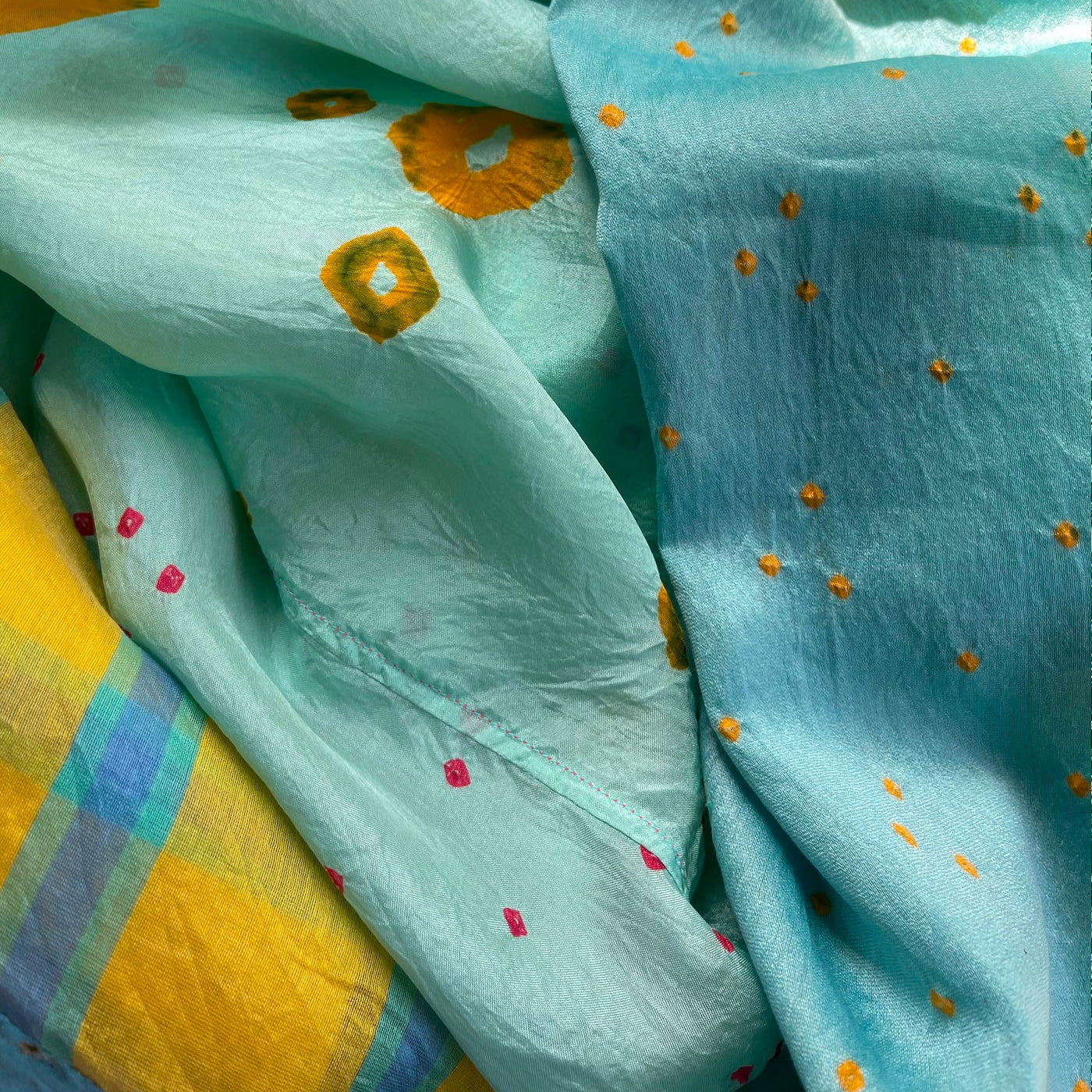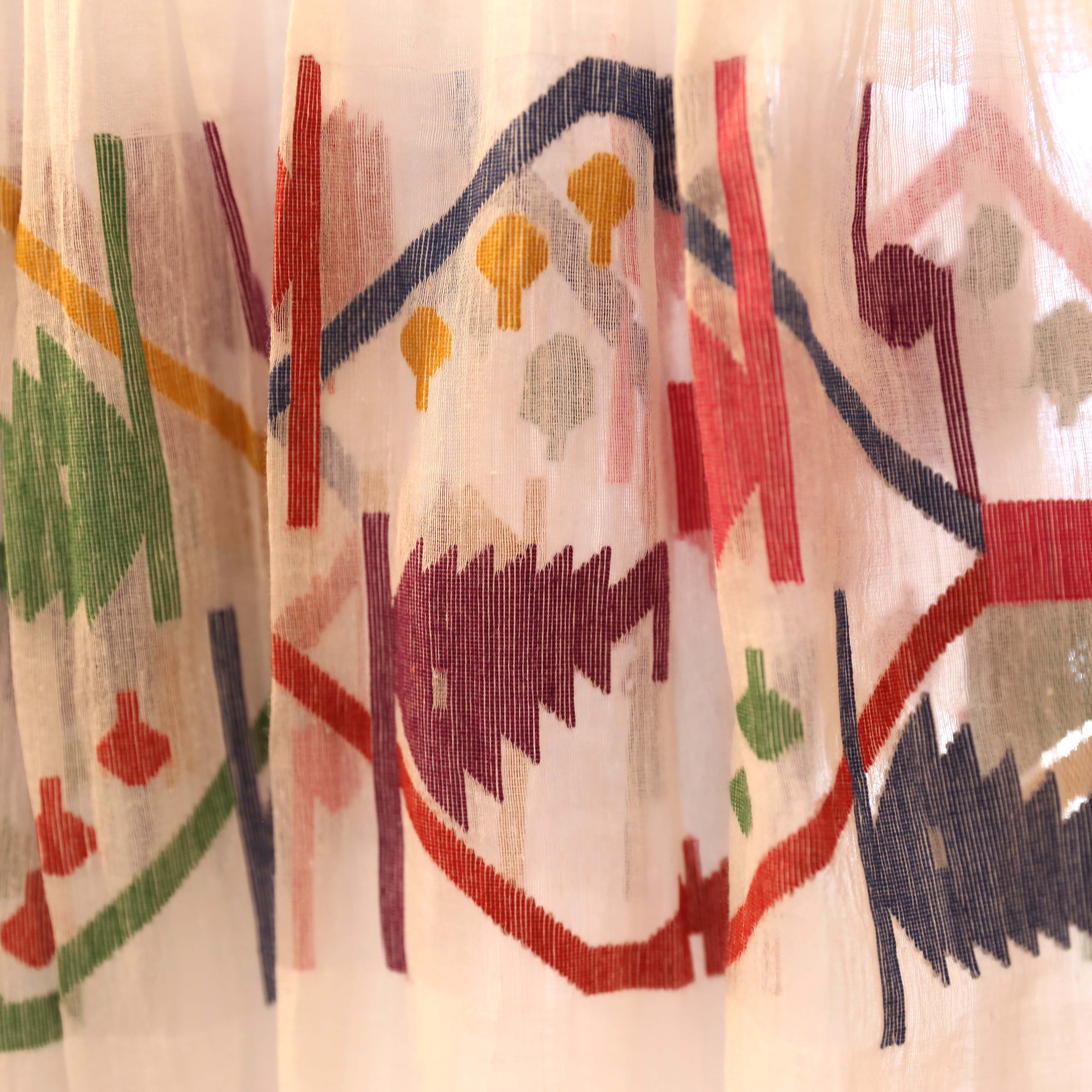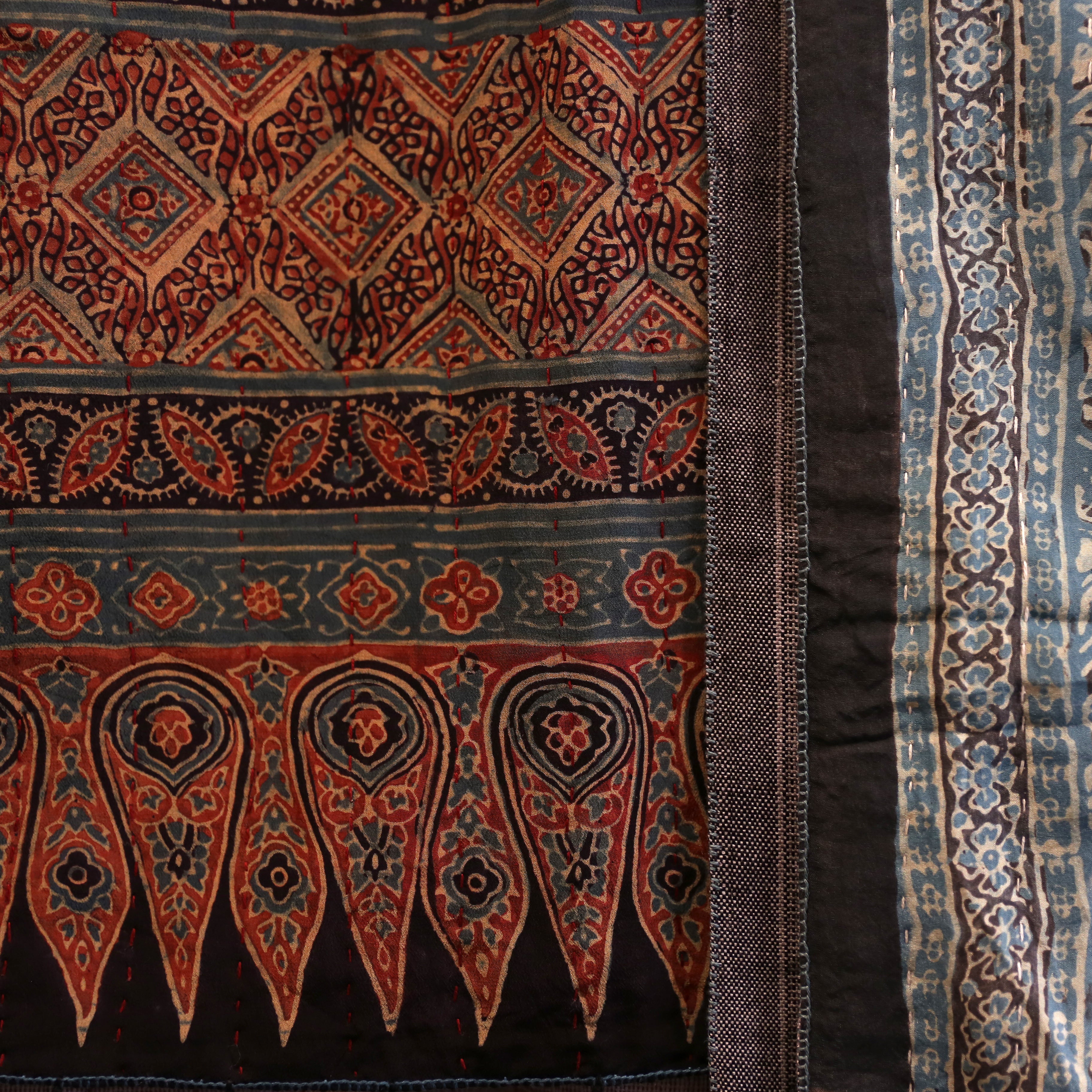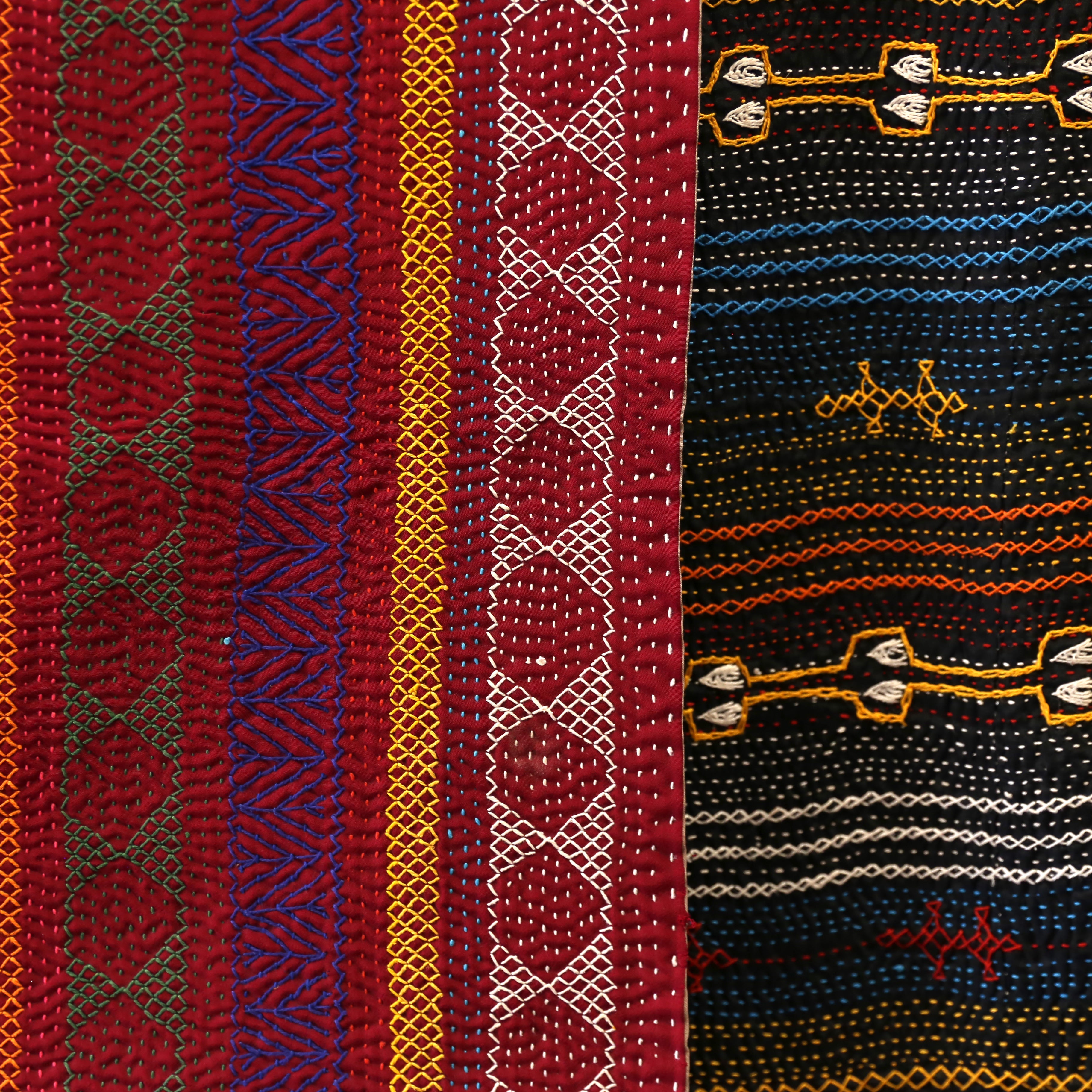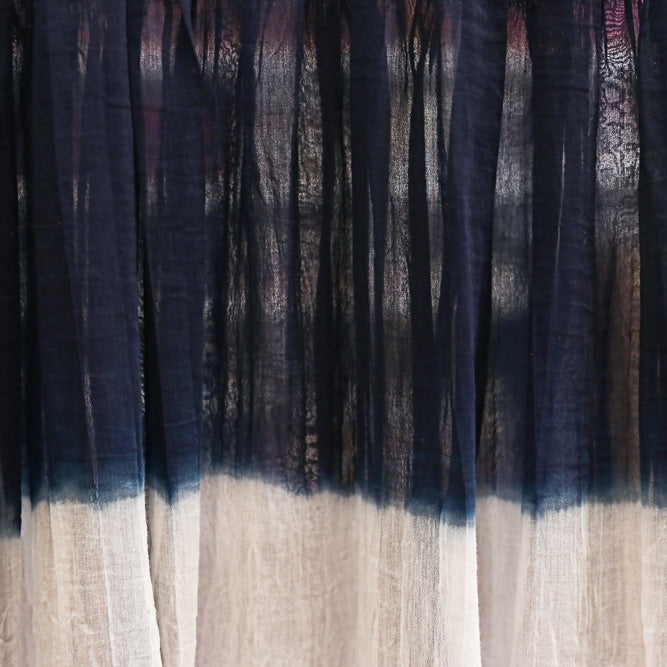Dyed ⋮ Bandhani
Timeless Artistry of Bandhani Textiles
Bandhani dates back to the 12th century and was introduced to Kutch by the Khatri community migrating from Sindh.
In Gujarat, bandhani is an expression used for textiles produced by tying individual parts of the fabric before dyeing. The main element of bandhani is a dot – a circular resisted motif.
The technique of tightly winding a thread around a section of cloth, dyeing it, and then removing the thread to reveal a circular resist motif has remained the same since bandhani was first practiced.
The demand for intricate designs featuring bandhani is high, and the newest patterns can feature as many as one hundred thousand ties (dots).
New versions of bandhani are being explored, as can been seen on the range of INJIRI clothes, to fit the demands of modern and more international clientele. Size, shape, and placement of each dot on the cloth to offers a whole new range of products, with patterns reflecting an artistic sentiment to explore and play, creating new motifs with an innovative spirit.
Traditionally, bandhani was created in various forms including wool, cotton, and silk for women from both Hindu and Muslim communities.
In a series of dots, Bandhani designs create peacocks, flowers, dancers or rasamandalas across a dyed piece of cloth. The dot designs are mapped onto the fabric by an artisan using butter paper. A simple cotton thread ties the cloth to create a single dot. A small cylindrical piece of plastic or glass is used as a bobbin for the thread. The tied material is dyed with various techniques, depending on the type and shade of the dye. The dyeing is done as many times as many colours are required in the fabric.
Bandhani tie and dye became a staple local source of income with the export of bandhani bandannas to Europe via the English East India Company in the 18th century. Much like the local block printers, bandhani artisans used local, natural resources like madder and pomegranate to dye their cloth in a brilliant range of hues.
After the 1956 earthquake of Kachchh, the introduction of chemical dyes drastically altered the craft. Chemical dyes were cheap and affordable in a time of economic crisis, and the upsurge in their popularity all but erased the original knowledge of using vegetable dyes.

The Khatri brothers pulling the fabric open so all the threads tying the dots are released.


Seeing the need to control the use of chemical dyes in Kachchh so that lasting ecological damage was not done to the environment, water, and people of local communities, initiatives have begun to popularise and teach the value of natural dyes, making natural dyestuffs more accessible to modern artisans, with workshops and trainings with bandhani artisans, to expose them to sustainable practices.
Today, the Khatri community is the main producer of bandhani in Gujarat, maintaining a mastery of the craft that has lasted for generations. For Abdul and Abdullah Khatri, over 200 independent women artisans in villages in Kutch form the heart of production, tying thousands of tiny knots on the stencilled fabric to create a single scarf or shawl.
